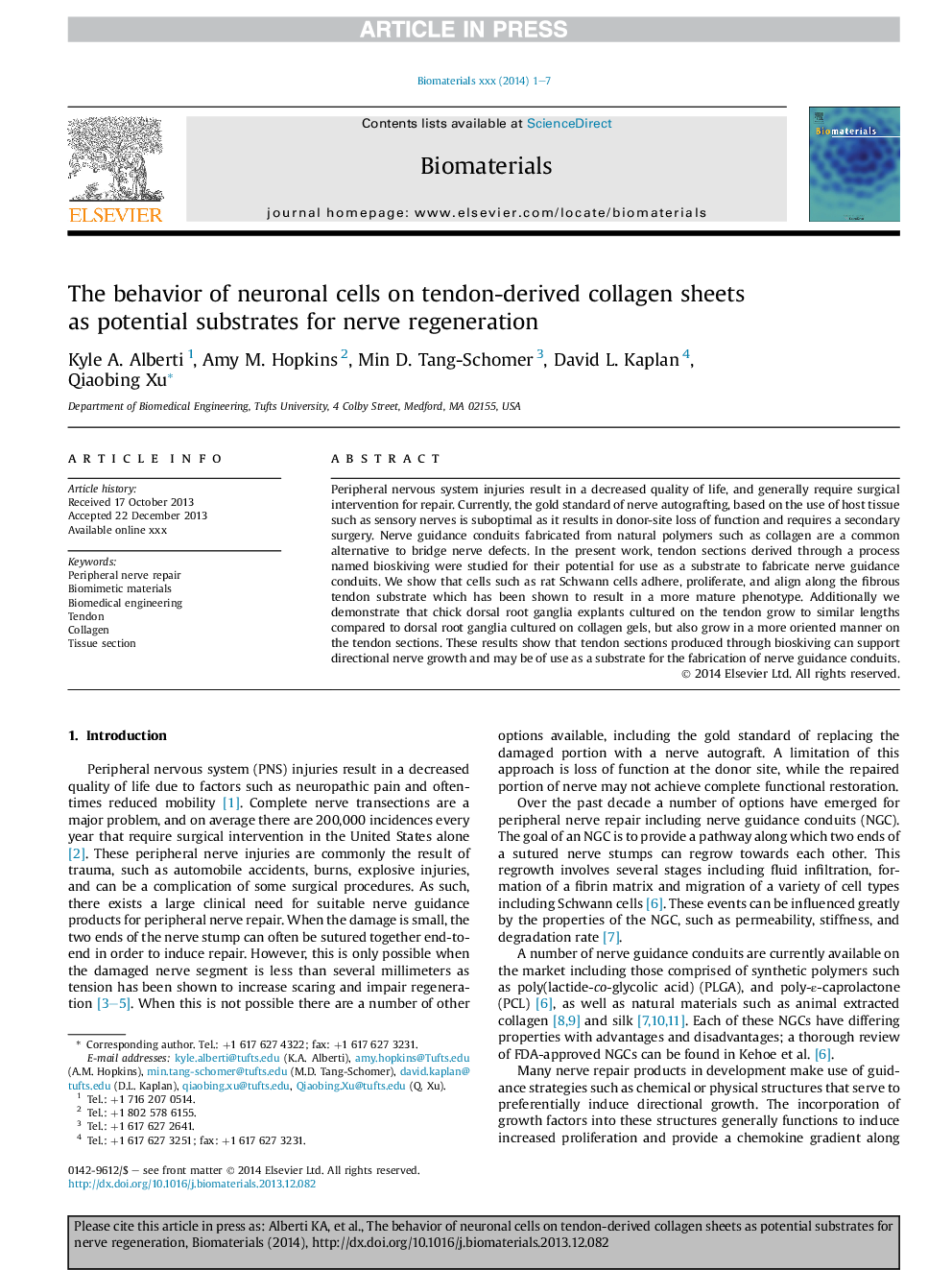| Article ID | Journal | Published Year | Pages | File Type |
|---|---|---|---|---|
| 10228286 | Biomaterials | 2014 | 7 Pages |
Abstract
Peripheral nervous system injuries result in a decreased quality of life, and generally require surgical intervention for repair. Currently, the gold standard of nerve autografting, based on the use of host tissue such as sensory nerves is suboptimal as it results in donor-site loss of function and requires a secondary surgery. Nerve guidance conduits fabricated from natural polymers such as collagen are a common alternative to bridge nerve defects. In the present work, tendon sections derived through a process named bioskiving were studied for their potential for use as a substrate to fabricate nerve guidance conduits. We show that cells such as rat Schwann cells adhere, proliferate, and align along the fibrous tendon substrate which has been shown to result in a more mature phenotype. Additionally we demonstrate that chick dorsal root ganglia explants cultured on the tendon grow to similar lengths compared to dorsal root ganglia cultured on collagen gels, but also grow in a more oriented manner on the tendon sections. These results show that tendon sections produced through bioskiving can support directional nerve growth and may be of use as a substrate for the fabrication of nerve guidance conduits.
Keywords
Related Topics
Physical Sciences and Engineering
Chemical Engineering
Bioengineering
Authors
Kyle A. Alberti, Amy M. Hopkins, Min D. Tang-Schomer, David L. Kaplan, Qiaobing Xu,
